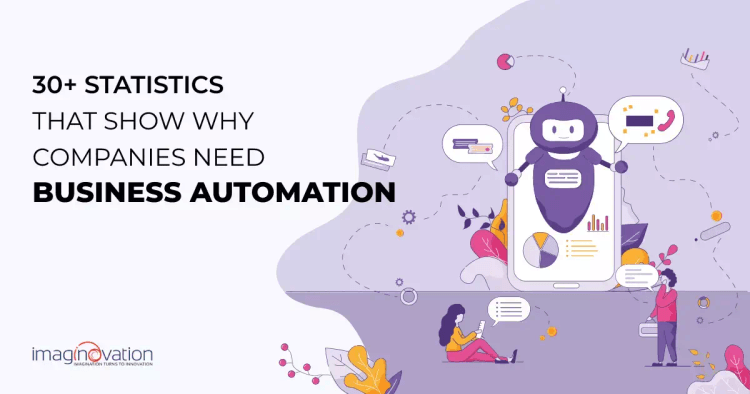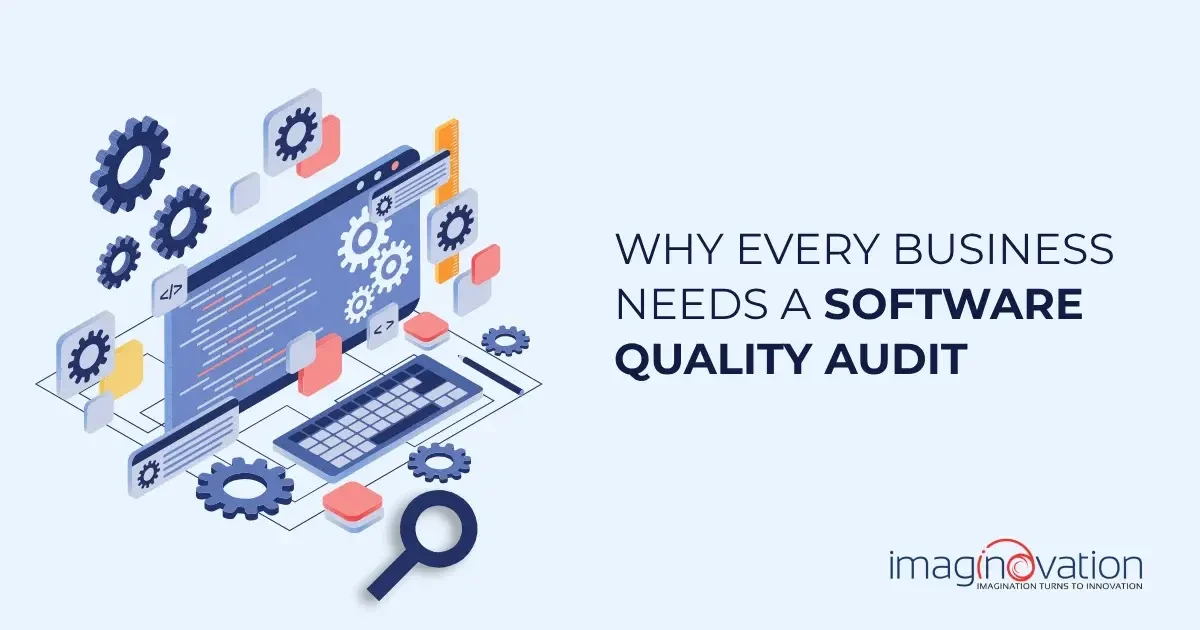Due to constant disruption caused by technologies, the future of business and work is changing at a rapid pace. As a result, companies no longer view automation as just a tool to eliminate repetitive tasks. It has gone beyond and has become an essential digital transformation component.
So, what does the year 2024 hold for businesses?
Going by the statistics, the significance of technology will increase more than ever. And, we will witness more and more companies adopt automation throughout 2024.
Let’s take a closer look at the statistics to understand why you need to embrace business automation now more than ever.
Let’s begin!
Automation Market Statistics
Do you know what is the biggest hurdles to a company's digital transformation?
It is the burden of carrying on with existing business processes that consume company resources, are redundant, and leave no time for strategy and innovation.
Automating existing business processes with the help of game-changing technologies helps free up resources and build efficiency. This, in turn, offers a foundation for the company's digital transformation.
That’s why companies around the world are spending on digital transformation.
This year, in 2024, global digital transformation (DX) spending is projected to touch 1.8 trillion USD. In just three years, i.e., by 2025, it is expected to reach 2.8 trillion USD. (Source)
Let’s understand how automation is picking up steadily.
- A 2020 global survey by McKinsey and Co. states that 66% of businesses have piloted the automation of business processes in one or more business functions. This is a significant jump of 9% from 57% in the previous survey of 2018. (Source)
- As per Gartner, the global hyper automation-enabling software market will reach nearly 600 billion USD in 2024. This is a noticeable rise from 481.6 billion USD in 2020. (Source)
- Data and analytics have become the most essential for digital transformation. By 2024, 90% of corporate strategies will highlight information as a critical business asset and analytics as a crucial competency.

Business Process Automation Statistics
Automation of business processes brings ample opportunities for you to achieve scalability and reliability with improved efficiency.
Suppose you do not bring business process automation. In that case, your team is stuck with manual tasks at hand that offer low value to businesses and delay your company's digital transformation.
By deploying business process automation tools, you can streamline operations bring down costs, human errors, and processing time.
The BPA market is growing. From 9.8 billion USD in 2020, it is expected to reach 19.6 billion USD by 2026.
Here are the statistics that tell us how and why most companies automate workflows.
- Most organizations (97%) believe that business process automation is crucial for digital transformation. (Source)
Any discussion about business process automation is incomplete without talking about RPA and DPA. So, here’s what the data says:
- RPA (Robotic process automation) relies on bots to mimic regular cognitive human tasks. In 2019, the value of the RPA market was 1.4 billion USD. Research forecasted it to grow at a CAGR of 6% between 2020 and 2027.
- DPA (Digital process automation) is a newer variant of BPM that is lightweight and needs less coding. In 2019, DPA had a market value of 7.8 billion USD. By 2025, it is expected to grow at a CAGR of 13%, reaching 16.12 billion USD.
The demand for business process automation is seen from the following stats.
- 90% of employees feel burdened with repetitive and boring tasks that can be easily automated.
- 68% of employees have suffered because of work overload in which they have too much to handle on a daily basis.
- 81% of workers can reach breaking point if they do not tap automation to handle volumes of work.
Additional statistics tell us:
- 67% of companies use business process automation solutions that improve end-to-end visibility across different systems.
- 24% of companies have started implementing low-code process automation systems.
- 29% of companies plan to implement low-code process automation software shortly.
Workforce, HR and Skill Automation Statistics
Companies worldwide are banking on automation systems to lighten the burden of manual and repetitive tasks of their workforce. And this reorganization of work is changing the dynamics of the workforce.
As per a survey by Statista, workforce management solutions generated revenue of around 2.4 billion USD in 2019. From 2018 to 2019, this segment had gained 600 million USD.
Here’s how automation plays a vital role in reshaping the workforce.
- A global survey revealed that around 74% of respondents quoted their workforce (11% to 50%) would be impacted by the adoption of intelligence automation (IA) technologies.
- More than 80% of business leaders reported accelerating their work process automation and scaling up their use of remote work.
- 50% of business leaders are ready to accelerate the digitization of jobs in their companies. (Source)
- Workplaces are becoming more dependent on technologies. There is a significant growth in the technology-induced displacement of employees and a need to provide workers with the required skills and training. Nearly half of those surveyed (49%) develop their own training programs in this direction. (Source)
- 43% of businesses plan to reduce their workforce because of technology integration. On the other hand, 34% will expand their workforce due to technology integration.
- According to Gartner, 69% of day-to-day managerial work will be entirely automated by 2024.
- A McKinsey report on the future of work estimates that one-third of work activities could be automated in about 60% of the occupations.
- 51% of automation initiatives were taken to boost employee efficiency.
- 31% of businesses surveyed are highly concerned about job loss that automation may trigger.
- To address this concern, companies are looking at ways to internally redeploy almost 50% of workers displaced because of automation.
- Organizations with successful automation initiatives are more likely than others to scale up their automation programs by adopting “human in the loop” solutions with people’s input.
- Gartner's survey reveals talent shortage as the key adoption risk factor for most IT automation technologies (75%) and approximately 40 percent of digital workplace technologies.

Moreover, automating human resources is a win-win solution for businesses. Here’s what the data says.
- Almost half (45%) of human resources departments have started focusing on intelligent or process automation.
- As per 18% of IT leaders, the highest ROI from automation occurs in the HR department of companies.
- 70%of businesses believe that an automation solution is necessary to build more effective teams.
- 61% of business leaders believe automation technology will help hiring managers choose the right talent for the job.
AI and Machine Learning in Automation
Artificial intelligence and machine learning are prominent tools to help automate processes more effectively.
These technologies make your business processes more predictable; they also reduce the problems created by human errors and speed up your workflow, bringing efficiency.
According to the last edition of IDC’s Worldwide Semi-annual AI Tracker, companies globally would spend approximately 342 billion USD on AI in 2021. This tracker also forecasts that the AI market will pick up pace in 2024, with a growth of 18.8%, and remain on track to reach the 500 billion USD mark by 2024.
Let’s check out some of the automation statistics around AI and ML that improve the automation workflow.
- During the 2020 survey of Deloitte, nearly three out of four execs (73%) confirmed they had an intelligent automation initiative (using AI and ML technologies).
- The same survey revealed that every second company uses AI for at least one business function.
A Deloitte survey had 1900 organizations highlight some benefits of using AI in businesses.

Benefits AI delivered are:
- Understanding that strategy is essential, 43% of AI best-performers have a well-defined AI strategy.
- 45% of businesses use AI to cut down costs.
- 38% of companies have adopted ML to bring down costs, while 34% use it for the customer experience.
- 66% of companies experience increased revenue with AI technology.
- More than half (56% ) of HR verticals have experienced increased revenue because of AI adoption.
Automate Your Business For Growth With Imaginovation
Automation is an excellent tool if you’re looking to scale your business. But, hold on! It’s not a magic wand to grow your business just like that.
Instead, it can be handy for your company’s digital transformation journey by driving efficiency and productivity if appropriately built.
Get in touch with us at Imaginovation and automate your workflows. We will help you identify opportunities to make improvements and incorporate automation.
Imaginovation is an award-winning web and mobile app development company with vast experience crafting remarkable digital success stories for diverse companies. Let's talk.




